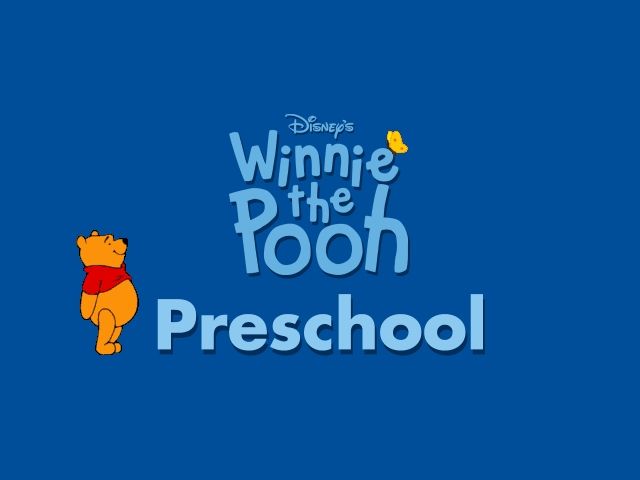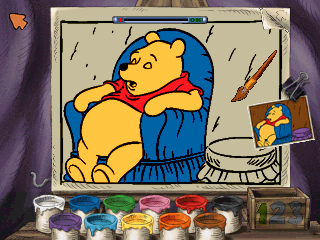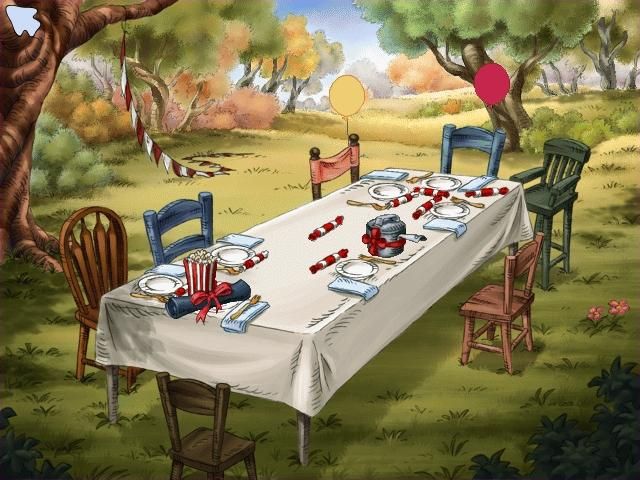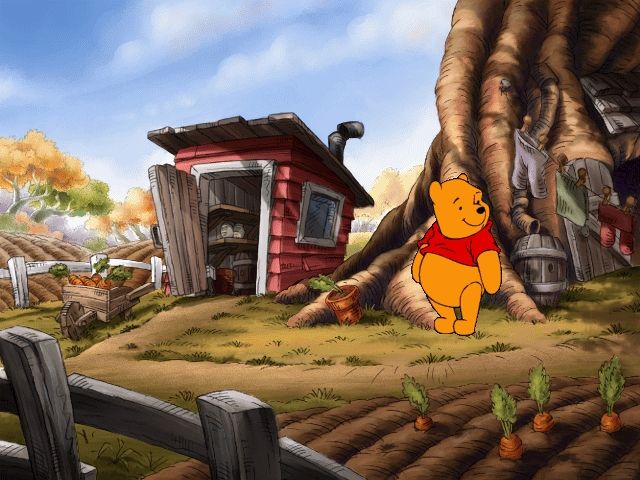Retro Replay Review
Gameplay
Disney’s Winnie the Pooh: Preschool offers a gentle point-and-click interface that’s perfectly tailored to young learners. From the very first moment, children guide Pooh through the Hundred Acre Wood by simply clicking on familiar landmarks—no reading skills required. This intuitive control scheme reduces frustration and helps kids stay focused on the learning objectives rather than wrestling with complicated menus or keyboard commands.
The heart of the gameplay lies in six distinct minigames, each hosted by a beloved Pooh character. Whether it’s matching letters for Kanga’s Alphabet Soup, sequencing images in Pooh’s Dream, or helping Rabbit label his harvest, every activity is presented as a fun, hands-on task. The tasks range in difficulty from simple matching to basic counting and color mixing, ensuring that kids can progress at their own pace and feel a sense of accomplishment with each success.
Progression in the game is visual and rewarding. As each minigame is completed, party decorations and gifts appear in Christopher Robin’s Party Place, giving children a tangible record of their achievements. For parents and educators, a built-in Progress Chart outlines which skills have been mastered—be it letter recognition, auditory discrimination, or number counting—making it easy to track development and set goals for future play sessions.
Another standout feature is Pooh’s Print ’n’ Learn, accessible from the map screen. This creative station unlocks a wealth of printable activities—from bookmarks and flashcards to full workbook pages—that reinforce the digital lessons with hands-on projects. By bridging on-screen exploration with offline crafts, the game extends its educational impact beyond the computer and into daily routines.
Graphics
The visual style of Disney’s Winnie the Pooh: Preschool captures the charm of E.H. Shepard’s original illustrations while introducing a brighter, more colorful palette suited to modern screens. Characters look as if they’ve stepped right out of A.A. Milne’s stories, and the gentle, watercolor-inspired backgrounds evoke the peaceful atmosphere of the Hundred Acre Wood.
Animations are simple yet expressive, emphasizing character mannerisms—Tigger’s bounces, Piglet’s shy nods, and Rabbit’s meticulous fussiness all shine through. These subtle motions bring the personalities of each friend to life in a way that resonates with preschoolers, holding their attention without overwhelming them with rapid movement or flashy effects.
Interface elements are large, high-contrast, and clearly labeled, ensuring that young eyes can easily identify interactive hotspots. Menus, buttons, and icons use bold outlines and festive colors that stay consistent throughout the game, helping children develop a sense of visual predictability as they explore various activities.
Overall, the graphical presentation strikes a fine balance between nostalgic authenticity and child-friendly design. It’s a visual experience that feels both timeless and accessible, inviting kids into a world they know from storybooks and parents appreciate for its fidelity to the source material.
Story
The narrative premise of Pooh forgetting Eeyore’s birthday is simple but effective: it gives every task a clear purpose and ties each minigame back to the central goal of throwing a memorable party. This linear storyline gently guides children from one activity to the next, providing context and motivation without overwhelming them with plot twists or subplots.
Each character encounter is peppered with lighthearted dialogue and sincere expressions of friendship. Pooh’s earnest desire to celebrate Eeyore’s special day becomes a heartwarming thread that unites all the minigames, transforming educational tasks into acts of kindness. Parents will appreciate the game’s positive messages about helping friends and working together.
While the story doesn’t delve into dramatic arcs, it doesn’t need to. Its simplicity is its strength, allowing the learning objectives to take center stage while still offering a charming narrative framework. For children who are already fans of Winnie the Pooh, the storyline feels like an extension of their favorite tales, reinforcing character bonds in a fresh, interactive setting.
Subtle touches—like Pooh’s puzzled expressions when he wakes up and Eeyore’s appreciative smile at the party’s end—add emotional resonance. Even without spoken dialogue, expressive animations and gentle background music create an inviting atmosphere that keeps young players emotionally invested from start to finish.
Overall Experience
Disney’s Winnie the Pooh: Preschool excels at blending classic storytelling with foundational learning. Its approachable interface and progressively challenging minigames make it ideal for children aged three to five, while the faithful art style and beloved characters ensure that the experience feels authentically Poohish. It’s more than just a collection of activities—it’s a guided educational journey through the Hundred Acre Wood.
The game’s built-in tracking features, such as the Progress Chart and the Party Place rewards, give parents and caregivers clear insight into each child’s achievements. This transparency transforms playtime into a purposeful learning session, empowering adults to identify strengths, address areas for improvement, and celebrate milestones alongside their little ones.
Replay value is high, thanks to adjustable difficulty levels and the lure of completing new party decorations. Pooh’s Print ’n’ Learn extends the experience beyond the computer, encouraging repeat engagement with printable crafts that reinforce lesson concepts in a tactile way. This multi-modal approach to learning ensures that children encounter essential skills in diverse, memorable formats.
In sum, Disney’s Winnie the Pooh: Preschool is a lovingly crafted educational title that captures the spirit of Milne and Shepard’s world while providing a robust suite of learning activities. Its balanced combination of gameplay, graphics, story, and educational depth makes it a standout choice for parents seeking a screen-based experience that’s both enriching and enchanting for young learners.
 Retro Replay Retro Replay gaming reviews, news, emulation, geek stuff and more!
Retro Replay Retro Replay gaming reviews, news, emulation, geek stuff and more!









Reviews
There are no reviews yet.